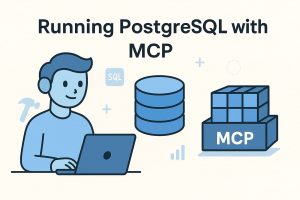Why I Moved to a Small Business in Kochi

Table of Contents
Introducing Myself
Hello, my name is A.M., and I am a member of the Efficiency Improvement Team at Hirose Paper Manufacturing Co., Ltd. Recently, I was assigned to this team as part of the company’s digital transformation (DX) initiative.
Before joining the paper manufacturing industry, I worked in the IT sector as a web engineer. My transition to this new field may seem unexpected, but there is a personal reason behind my decision.
Why I Moved to a Small Business in Kochi
Although I grew up in Kanazawa and Nagoya, I was born in Kochi City, Kochi Prefecture. As a child, I frequently visited my grandfather’s home in Kochi during summer vacations and New Year’s holidays. Those visits were filled with special experiences—eating katsuo no tataki (seared bonito, a local delicacy), enjoying sawachi ryori (a traditional celebratory dish with various seafood and vegetables served on a large platter), and picking buntan (a type of pomelo) in the mountains. More than anything, I cherished the time spent with my grandfather.
After my grandfather passed away, his house remained vacant. My family considered selling it, but I felt deeply attached to the home. One day, while discussing with my wife how wonderful it would be to live there, I coincidentally came across a job listing for Hirose Paper Manufacturing Co., Ltd. I was drawn to the company’s dedication to preserving traditional Japanese paper-making techniques while embracing modern technology to shape the future of manufacturing. Additionally, the unique members of the project team left a strong impression on me, ultimately leading to my decision to switch careers.
Now, my wife and I live in my grandfather’s house, surrounded by the beautiful mountains of Kochi. Every morning and evening, I feel a deep sense of peace as I take in the natural scenery. Living in a place that holds so many precious memories while working on something I am passionate about is a true blessing. I am excited to apply my experience as a web engineer to contribute to the digital transformation of the paper manufacturing industry.
About the Productivity Improvement Project Team
I have joined the “Productivity Improvement Project Team,” which, as its name suggests, aims to enhance the operational efficiency of our production equipment. However, our work extends far beyond just improving machine uptime.
Our projects involve cutting-edge digital technologies, such as developing image recognition systems using machine learning and constructing physical models through computational fluid dynamics (CFD) analysis. These are research themes that I could never have explored as a web engineer, and they make my work incredibly fulfilling. Every day, I encounter new discoveries that fuel my passion for engineering.
However, there are many challenges to overcome. The company is not only in the early stages of DX but also still in the process of basic IT adoption. Important data is managed using Excel spreadsheets, and information sharing between departments is not yet streamlined.
Given this reality, my first priority is to establish a solid IT infrastructure. While this may seem like a tedious and unglamorous task, I believe it is the essential foundation for true digital transformation. Alongside introducing new technologies, I am committed to strengthening the company’s IT fundamentals.
Information Overload and Lack of Organization
Despite these challenges, our company has a strong culture of recording data meticulously. Employees diligently document operational status and quality data at every production stage, demonstrating an awareness of data’s importance.
The issue, however, lies in how this data is stored. Information is scattered across various formats—Excel files, PDFs, and even scanned handwritten reports—within a shared folder system that lacks standardized organization. Different employees create their own folder structures, resulting in multiple similarly named folders with no clear classification.
This lack of organization makes retrieving past data extremely difficult. For instance, when troubleshooting product defects, finding relevant past cases can take an enormous amount of time. As a result, valuable data collected through meticulous effort often remains underutilized—a classic case of “untapped potential.”
To solve this problem, implementing a centralized database is crucial. By consolidating data into a unified system and ensuring quick and easy access, we can transform this wealth of information into a strategic asset for the company.
Towards Efficient Database Management
Building a database is not just about creating a place to store data—it is about establishing a system where information can be efficiently retrieved and utilized for business improvement and decision-making.
To achieve this, it is essential that all employees recognize the importance of data and develop a habit of systematically inputting and managing it. Naturally, some may resist change, arguing that “the current way is fine” or “this process is too tedious.” However, through ongoing awareness campaigns and training, I hope to foster a data-driven culture within the company.
Moreover, for our collected data to contribute to overall corporate efficiency, we must deeply understand on-the-ground operations while also taking a holistic, management-level approach to optimization. The challenge of database implementation is not just a technological one—it is fundamentally a “people and organizational” challenge.
We plan to start with small-scale pilot projects, learning from actual operations, identifying issues, and refining the system step by step. It will take time to achieve an ideal setup, but through continuous trial and improvement, I am confident that we will make steady progress.
Conclusion
Before joining the manufacturing industry, it was an unfamiliar world to me. Now that I have spent a month living in Kochi, I am grateful for the warm and supportive colleagues I have met. Outside of work, I enjoy shopping at Kochi’s famous Sunday Market, where I can buy fresh local produce, and my new life has been even more fulfilling than I imagined.
Hirose Paper Manufacturing Co., Ltd. is a small company based in Kochi Prefecture, but it plays a unique role in the industry by leveraging traditional Japanese paper-making techniques to manufacture wet-laid nonwovens. While there are many areas that still need improvement, this also means there is tremendous potential for growth. The company’s DX initiatives offer an exciting opportunity for tangible and impactful improvements.
Our office is surrounded by serene countryside landscapes, creating a peaceful and inspiring work environment. Being able to contribute to the future of Hirose Paper Manufacturing, where tradition meets innovation, is an experience I deeply cherish.
As I continue to embrace the rich lifestyle of Kochi, I look forward to steadily pushing forward with digital transformation efforts to unlock the full potential of our company.





